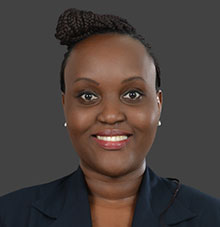Unlocking private sector investment in power transmission
Thanks to new renewable power projects coming online, Kenya’s generation capacity now exceeds 3,000 MW. This success is partly attributable to investments from Independent Power Producers.
Conversely, power transmission projects have been the poor cousin when it comes to receiving private sector investment. The gaps in our national transmission network forces remote regions to rely on expensive electricity from thermal plants thus inflicting higher costs on consumers.
Transmission projects have historically been funded by the public coffers and debt, including through sovereign borrowing which the government on-lends to the Kenya Electricity Transmission Company (KETRACO). However, as financial pressure continues to pile on the Exchequer, there is a shift towards the adoption of PPPs for transmission infrastructure. This raises the question of how Kenya can stimulate private sector investment in such PPPs.
First, the government can address the issue of land acquisition. By their nature, transmission networks extend over large stretches of land which calls for rights of way over public, private, and community land. This complicates the land acquisition process due to the number of stakeholders involved and the level of compensation required.
The government should develop a comprehensive plan for transmission line routes and commence the acquisition of land rights in advance under a land banking system, to mitigate against inordinate project delays and cost overruns. In addition, the lessons learned from land acquisition challenges in past transmission projects can be leveraged to make the process smoother.
Closely related to the issue of land is social and environmental concerns. As transmission lines usually traverse different terrains and communities, there are myriad economic, social, environmental and political issues for an investor to consider. These include the impact on the environment including wildlife, resettlement of affected communities, and security against vandalism and injury.
Investors should be ready to engage local communities from the onset of project development to map out and manage their grievances and ultimately win their support. Failure to handle this effectively has proven fatal for projects such as the 60 MW Kinangop wind park, which was cancelled due to strong opposition from the local community.
There is need for an enabling legal and regulatory framework to support independent power transmitters. Fortunately, Kenya’s Public Private Partnerships Act and Energy Act, provide for this. While this is a step in the right direction, the regulations needed to govern transmission or wheeling charges are still works in progress. This hampers investors’ ability to reliably assess their financial returns.
Model project agreements should be developed to bring clarity and consistency on the sharing of risks between the public and private parties. These template agreements can then be tailored to accommodate the unique characteristics of each project.
Lastly, it is essential to ensure that the transmission projects are bankable. Given the novel nature of such projects in Kenya, the government should consider providing enhanced Government Support Measures (GSMs) for the pioneer projects to attract funders. Over time and with a proven track record on such projects, the necessity of special GSMs can be revisited. Third party credit enhancement tools such as Partial Risk Guarantees from institutions like the World Bank can also be employed to de-risk further.
Happily, Kenya has now started on her inaugural transmission PPP projects for the 400kV Lessos – Loosuk and the 220kV Kisumu – Musaga lines. These pilot projects will be test cases from which we can glean useful insights on how to best structure and implement similar projects in future.
The article was published in the Business Daily on 2 August 2023 and can be accessed here.



